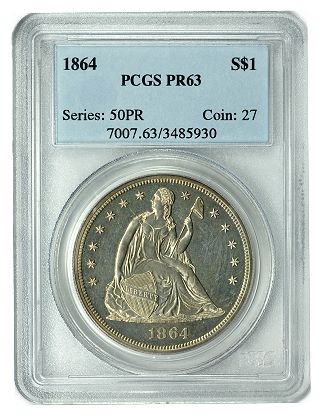Since the world-wide financial melt down occurred, during September, 2008, people have been trying to protect their savings and investments by diversifying from owning just stocks, bonds and cash, which are the three traditional investment types, into proven investment alternatives such as coins and precious metals. In general, people are concerned with the world-wide debt bubble, the safety of our banking system and the stability and value of the dollar, as well as the effects of such major events as global warming and the Gulf of Mexico oil catastrophe. So, one answer is to diversify into owning store of value assets that also have a potential to appreciate in value.
 Therefore, the demand for coins is steadily growing because of an increasing number of new people coming into the coin market with their savings and investment money, for reasons just cited. Contributing to this trend is that coins are closely related to gold and silver, which are main stream alternative investments. There’s a spill-over effect from precious metals to coins.
Therefore, the demand for coins is steadily growing because of an increasing number of new people coming into the coin market with their savings and investment money, for reasons just cited. Contributing to this trend is that coins are closely related to gold and silver, which are main stream alternative investments. There’s a spill-over effect from precious metals to coins.
In essence, this new money coming into the coin market is chasing a finite supply of popular coin issues, like the famous 1909-S V.D.B. Lincoln cent. This increased demand continues to force prices for such coins to be bid higher over the long-term. Of course, this rising trend in the values of coins has not continued without corrections, like with the softening of values we saw after the September, 2008 financial meltdown. However, as the coin market continues to stabilize from that correction, it means that values are at very favorable levels for buyers, compared to the heights they were at before the meltdown.
The appeal of coins as an alternative investment is that they are tangible objects that can be stored in bank safe deposit boxes (if you feel comfortable with that option) or with private businesses that operate secure depository facilities. Or they can be hidden at home (not recommended) or in another confidential secure place, keeping the climate in mind. Usually a warm, dry environment is best to protect their surfaces. Coins are also appealing as an alternative investment because they are not vulnerable to the successful performance of a business, as are most stock and bond investments. Coins as an investment are dependent upon appreciation of value and in making good buys valued lower than market prices. And, of course, coins are also a fun investment.
Additionally, coins have a market structure that is geared toward liquidity. Market values can be followed closely in price guides. And because coins are valued by condition and rarity, standardized grades of coins can easily be looked up in those price guides. Such guides enable an active, efficient market to take place privately and at coins shows, auctions, coin shops and through computerized trading networks.
These are the primary reasons people like coins as an investment alternative. Collecting coins has been been popular since they were first minted, thousands of years ago, and they’ll undoubtedly continue to be popular throughout time. While serious collectors usually do not consider themselves to be investors, they all hope to sell their coins for more than what they paid for them and they’re always thrilled when they get a good buy that’s below market value. This is where the fun of study and trading pay off!




